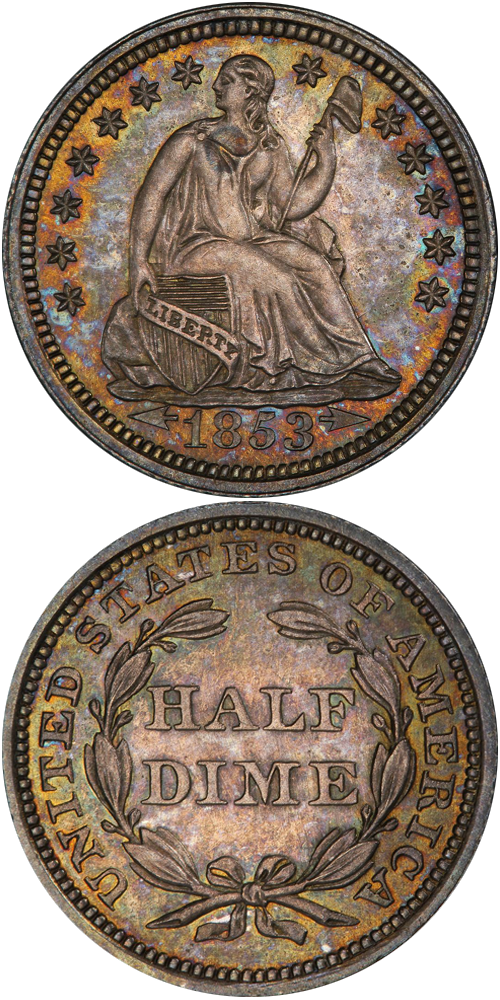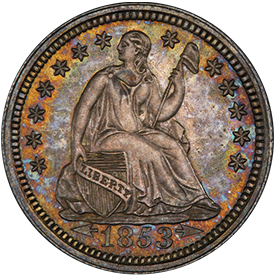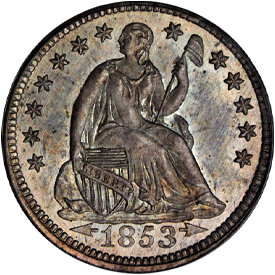Designed by: Christian Gobrecht
Issue Dates: 1853-1855
Composition: 90% silver, 10% copper
Diameter: 15.5 mm
Weight: 1.24 grams (19.2 grains)
Edge: Reeded
Business Strike Mintage: 25,060,020
Proof Mintage: Fewer than 150
In 1853 the Liberty Seated design was modified by the addition of tiny arrowheads to the left and right of the date, to signify a decrease in the authorized weight from 20.625 grains to 19.2 grains. These arrows remained in place through 1855, after which they were discontinued, although the reduced weight remained in effect for later years as well. The obverse depicts Liberty seated on a rock, holding in her left hand a liberty cap on a pole and with her right hand holding a shield. Stars are above, and the date, with an arrowhead on each side, is below. The reverse is the same as used earlier and consists of an open wreath enclosing HALF DIME with UNITED STATES OF AMERICA surrounding.
As earlier silver half dimes (and other silver denominations) were being hoarded, the mint produced an unprecedented quantity of half dimes of the with-arrows style, with the figure for 1853 totaling 13,210,020 at the Philadelphia Mint, whereas the highest mintage for any earlier half dime date since the inception of the denomination was 2,760,000, or less than a quarter of this figure, back in 1835.
The numismatist will have no difficulty in acquiring an example of this design in any desired grade from Good through AU. Uncirculated pieces are elusive, and superb Uncirculated pieces are scarce. The tremendous demand for them on the part of type set collectors has resulted in the supply being widespread.
Further Reading
In 1853 tiny arrowheads were added to half dimes alongside the date. This was to signify a reduction in the weight of the pieces. The price of silver was rising during this period, so the official weights of coins were reduced to prevent pieces from being melted down for bullion value. These arrows were continued on half dimes through 1855. While most with-arrows issues were minted in large quantities (1855-O being an exception), prices are generally higher for pieces of this design as examples are in strong demand for inclusion in type sets. A major scarcity is the 1853-O without arrows issue, a coin produced early in the 1853 year.








